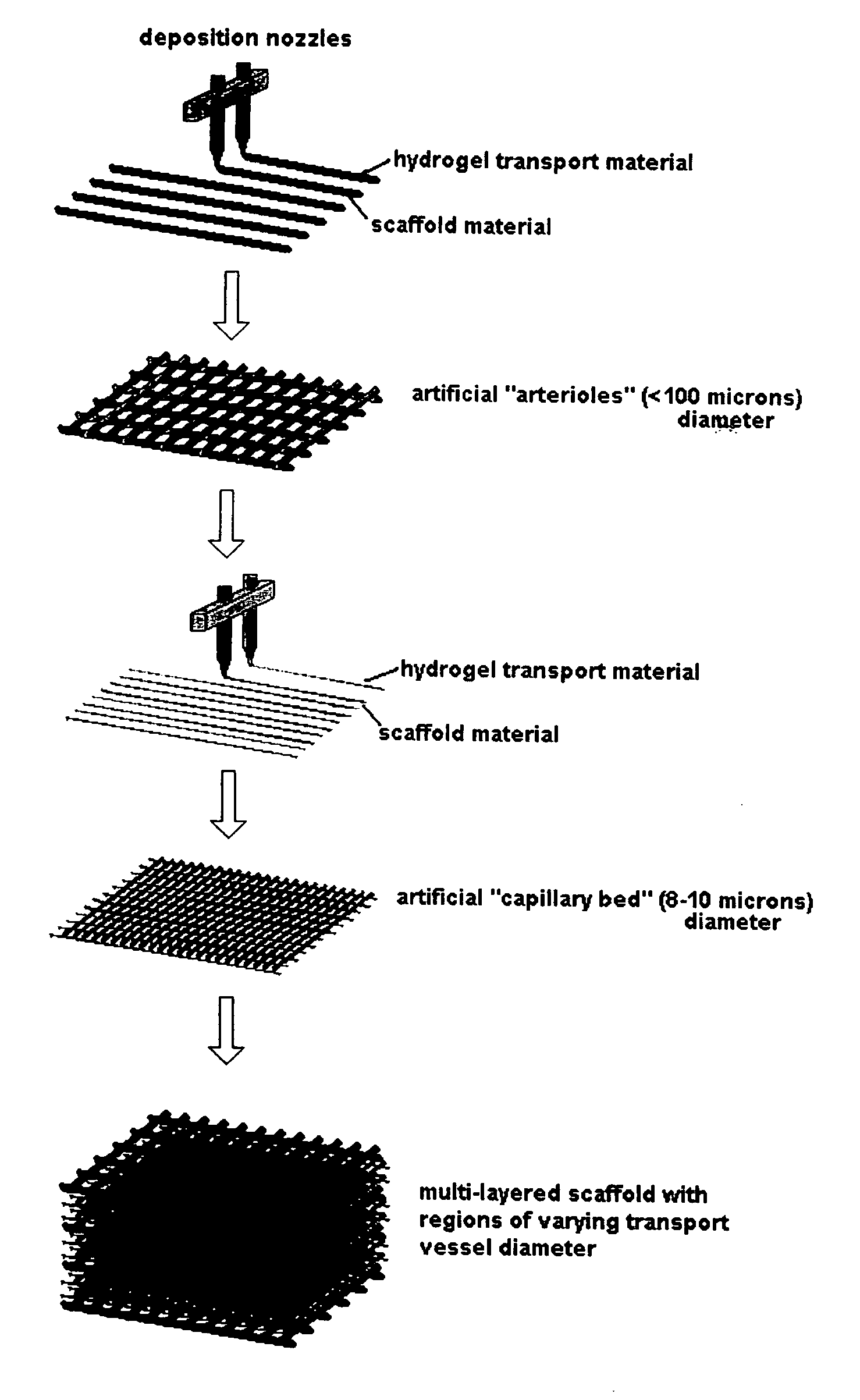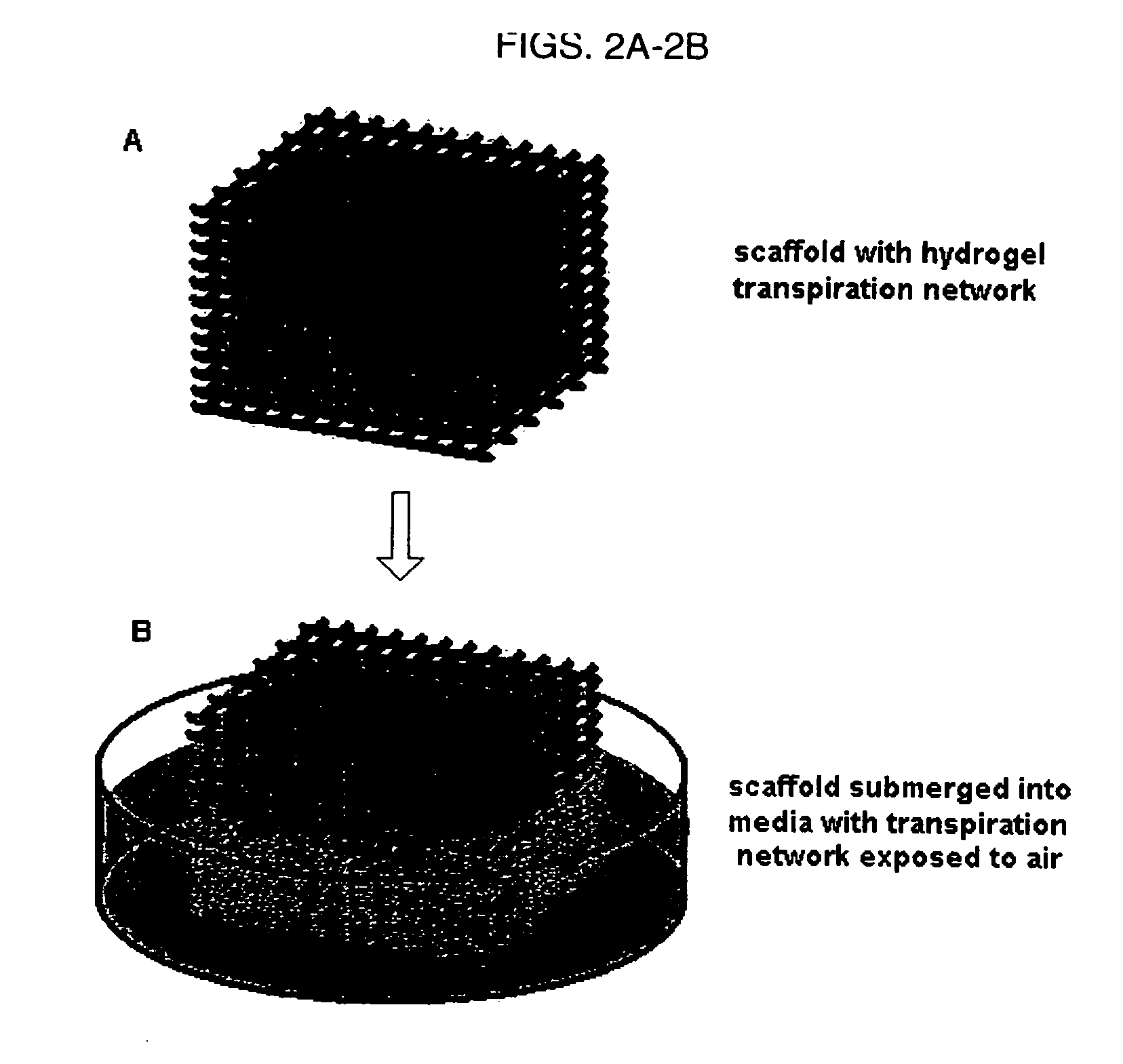Method for creating an internal transport system within tissue scaffolds using computer-aided tissue engineering
a technology of tissue scaffolds and internal transport, applied in the field of artificially created tissues, can solve the problems of insufficient flow of nutrients, shortening of organs for organ transplantation, and available artificial organs, and achieve the effects of improving circulation, diffusion, and mass transport properties
- Summary
- Abstract
- Description
- Claims
- Application Information
AI Technical Summary
Benefits of technology
Problems solved by technology
Method used
Image
Examples
example 1
[0074] In this example, the hydrogel channel system are constructed from alginate. Cells do not adhere well to alginate. Ordinary, this property is viewed as a disadvantage. Inventors have discovered that, this property can be used to our advantage within a hybrid scaffold since it would keep the alginate channels clear of blockages, thereby maintaining an open network to improve circulation. A poly(caprolactone) (PCL) scaffold is created with the precise extruding deposition system (PED) [21] and sterilized using 70% ethyl alcohol and UV light. The alginate filaments are created by extruding sodium alginate or potassium alginate into a calcium chloride crosslinking solution using a pneumatic nozzle system.
[0075] The equipment is wiped down with ethyl alcohol and set up under a laminar flow hood. Ethyl alcohol is run through to sterilize the interior of the system. Sterile, filtered air is used to actuate the valve. The alginate and crosslinking solutions are sterilized using UV li...
example 2
[0076] In this invention, the inventors utilize the unique manufacturing capabilities of 3D printing of multiple materials to optimize several aspects of tissue scaffolds simultaneously. Such parameters include mechanical properties, surface area available for cell attachment, material affinity for cell attachment, nutrient and gas transport efficiency, and biocompatibility. There has been a tendency in the community to investigate materials for these characteristics either singly or in homogenous mixtures [A20]. The use of 3D printing of multiple materials presents the option of combining specialist materials in a manner not achievable by mixing and casting. It is proposed that simultaneous deposition of four candidate materials can both improve the output of 3D tissue culture and gain greater control of cell growth and expression within the proposed scaffolds. A heterogeneous material printer could selectively lay down porosities for cell proliferation and transport, materials for...
PUM
| Property | Measurement | Unit |
|---|---|---|
| depth | aaaaa | aaaaa |
| diameter | aaaaa | aaaaa |
| sizes | aaaaa | aaaaa |
Abstract
Description
Claims
Application Information
 Login to View More
Login to View More - R&D
- Intellectual Property
- Life Sciences
- Materials
- Tech Scout
- Unparalleled Data Quality
- Higher Quality Content
- 60% Fewer Hallucinations
Browse by: Latest US Patents, China's latest patents, Technical Efficacy Thesaurus, Application Domain, Technology Topic, Popular Technical Reports.
© 2025 PatSnap. All rights reserved.Legal|Privacy policy|Modern Slavery Act Transparency Statement|Sitemap|About US| Contact US: help@patsnap.com



